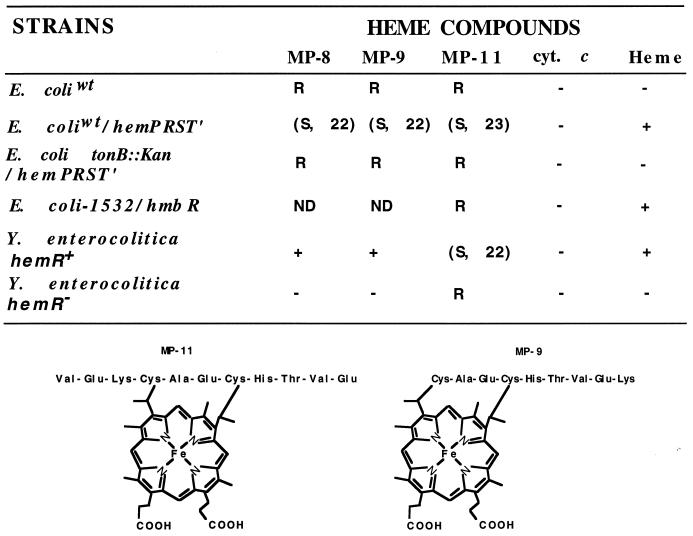FIG. 2.
Growth-inhibitory or -stimulatory activity of microperoxidases on Y. enterocolitica and E. coli (top) and structures of microperoxidases MP-9 and MP-11 (bottom). Wild-type E. coli hemA aroB (E. coliwt) and E. coli IR1532 (E. coli-1532), a DH5α heme biosynthesis mutant (47), were two of the strains used. Growth-inhibitory or -stimulatory activity of microperoxidases MP-8, MP-9, and MP-11, cytochrome c (cyt. c), and heme are shown as follows: R, resistant to the inhibitory activity of microperoxidases; (S, 22), sensitive to inhibitory activity of microperoxidases, with a 22-mm-diameter inhibition zone; ND, not done; +, stimulation of growth under iron-limiting conditions; −, no stimulation of growth under iron-limiting conditions. Only bacteria that possess functional HemR can be stimulated or inhibited by microperoxidases. The same results were obtained with the native and denatured forms of cytochrome c. MP-8 is one amino acid (Lys) shorter than MP-9 (not shown). Note a covalent link between the peptide and the heme moiety.

